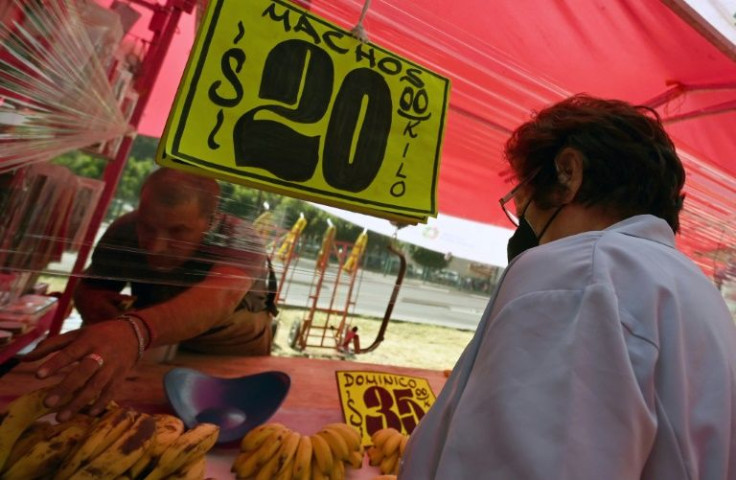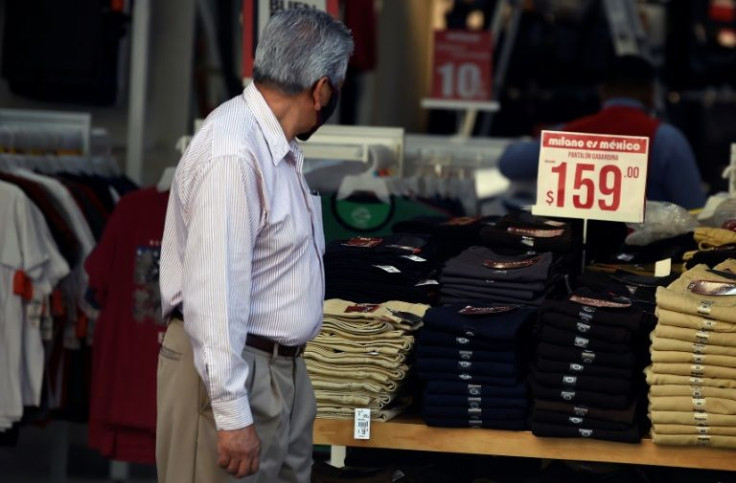Mexico's Economic Recovery Has Sting In Its Tail
Latin America's second-largest economy is bouncing back from its worst slump in decades, but rising living costs mean that many Mexicans like Reynaldo Perez are struggling to scrape by.
The 54-year-old ekes out a living from tips for valet parking for restaurant customers in Mexico City, the epicenter of the pandemic in one of the world's worst affected countries.
"After expenses, it's only enough to get by, without the luxury of going out with my family," said Perez, who overcame a bout of Covid-19 last year, spending two weeks in hospital.
Still, he feels lucky to even have a job. Several other businesses nearby went bankrupt.
"They couldn't survive the blow" from months of pandemic restrictions and a lack of customers, Perez said.
His story reflects the challenges facing the Mexican economy, whose post-pandemic recovery has a sting in its tail: rising prices of food and other essentials.

Inflation in Mexico reached 6.24 percent in the 12 months to October, more than double the central bank's target of around three percent, and the highest in almost four years.
Like many countries, Mexico is grappling with the impact of rising costs of energy and raw materials, as well as global supply chain bottlenecks.
At the same time, the Mexican economy -- the second largest in Latin America, after Brazil -- has yet to recover to its pre-pandemic size.
Gross domestic product (GDP) is expected to grow 6.2 percent this year, the Bank of Mexico predicts, not enough to fully reverse an 8.5 percent plunge in 2020.

Indicators such as consumption, employment, investment and tourism remain below pre-pandemic levels, said Gabriela Siller, head of analysis for the financial group BASE in the northern city of Monterrey.
"GDP won't fully recover until 2023, and in per capita terms not before 2027," she said.
Remittances from Mexicans living abroad have been a lifeline for millions of families, with more than $37 billion sent between January and September.
In an attempt to tame inflation, Mexico's central bank on Thursday announced a fourth straight interest rate increase, to 5.0 percent.
The move highlights a divergence between central banks in Latin America and those in the United States and much of Europe, where policymakers are reluctant to choke off an economic recovery.
The central banks of Brazil, Chile and Peru have also increased their benchmark interest rates in recent months to tackle inflation, in contrast to the US Federal Reserve and the European Central Bank.
Even after several increases, however, Mexico's benchmark lending rate remains below the level of inflation, resulting in what economists call negative real interest rates.
One important factor is that Mexicans tend to have relatively low levels of debt, said Benito Berber, an economist at the investment bank Natixis.
"People don't borrow as much, or the banks don't lend to them," he said, so rising interest rates directly affect them less.
More than half of economically active Mexicans work in the informal economy and have limited access to banking services.
That restricts the options for people like Jesus Moreno, who saw the price of the tomatoes he sells jump by more than 10 percent in just one month amid tight supply.
"What do you do? Just buy what you can," said the 30-year-old market vendor.
© Copyright AFP 2024. All rights reserved.











